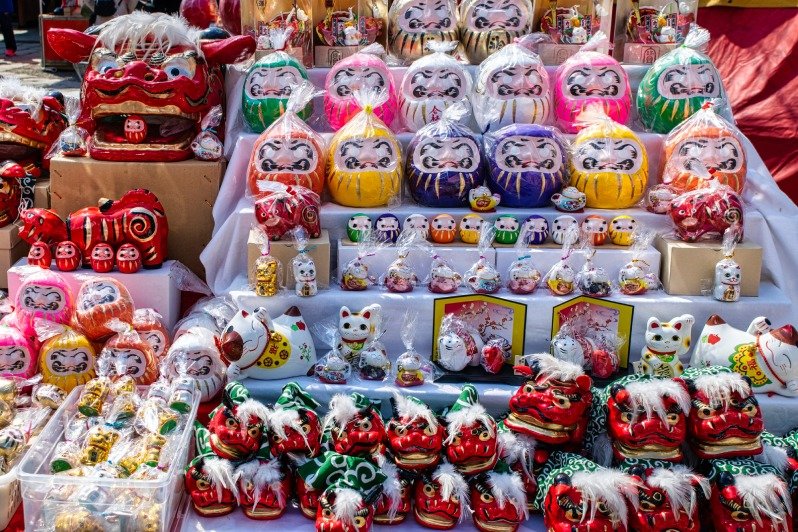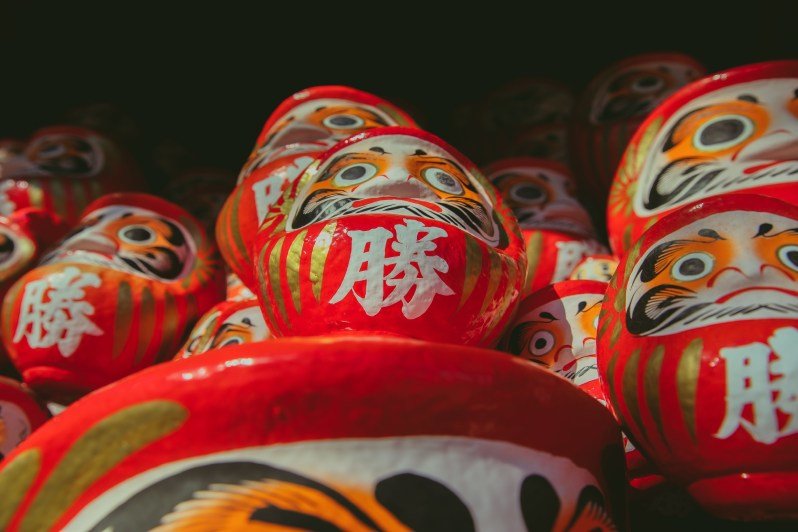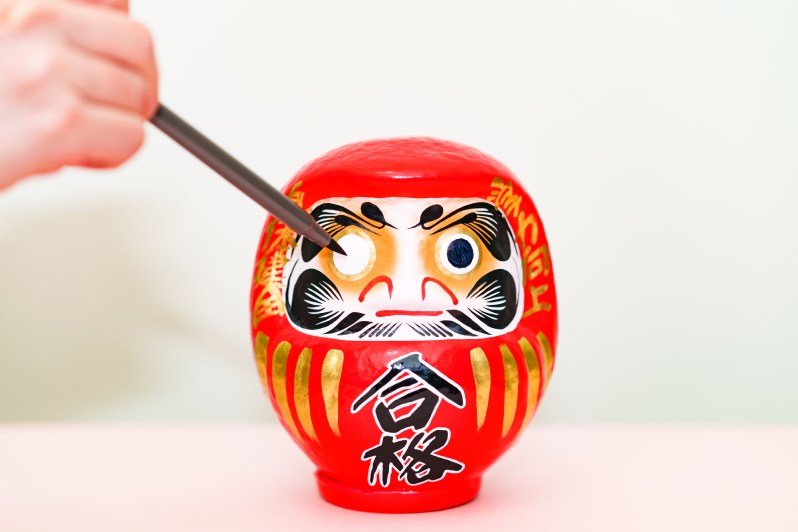If you’ve ever visited Japan at least once and looked for souvenirs to bring home, you might have encountered Daruma dolls on one of your shopping trips. These distinct red round dolls are sold almost everywhere as it is a huge part of Japanese culture — but what exactly are they and why are these dolls so popular?
.jpg)
Daruma dolls are distinct red round figurines sold in most places. (Photo from: Pexels)
The history of Daruma dolls
Daruma dolls have been around for centuries. It is believed that the Daruma dolls we now see with their particular round silhouette emerged during the Edo era (1603-1868). The Takasaki Darma from Takasaki City, Gunma Prefecture is possibly the most popular Daruma doll, and the city itself produces around 80% of Japan’s Daruma. Its name is derived from the Zen monk Bodhidharma, known in Japan as Daruma, and is traditionally painted red as a symbol of good luck. The doll’s limbless figure is said to resemble the legendary monk, as he supposedly lost his limbs from nine years of meditation.
The doll's eyebrows symbolise a crane, while the beard represents a turtle’s tail. This symbolism is derived from a Japanese proverb that suggests these animals have long lifespans, with cranes living up to 1,000 years and turtles up to 10,000 years. Conversely, Kanji characters for concepts such as “luck” and “happiness” are painted in the middle of the Daruma.

Daruma dolls come in various colours and sizes. (Photo from: Pixta)
More than just a lucky charm

These dolls are symbols of perseverance and luck. (Photo from: Pexels)
Aside from being a lucky charm, the Daruma doll serves as a motivational tool for many Japanese. Its round shape and unique design, which allows it to return to an upright position even when tilted, symbolise the Buddhist principle of “Nanakorobi Yaoki” or “Fall seven times, stand up eight.”
In addition, when you buy a Daruma doll, it would come without pupils painted on its eyes — it is tradition to fill in the pupils yourself: one as you make a wish or set a goal (usually at the beginning of the year), and the other once your wish has come true or your goal has been achieved.


